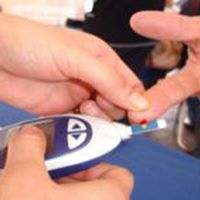Article
Using HbA1c to Identify Gestational Diabetes Early
Author(s):
On a global scale each year, half the number type 2 diabetics are undiagnosed with the average age of onset steadily falling.

On a global scale each year, half the number type 2 diabetics are undiagnosed with the average age of onset steadily falling.
Pre-diabetic patients are susceptible to gestational diabetes because pregnancy induces insulin resistance. Gestational diabetes compromises maternal and infant outcomes including congenital anomalies, pre-eclampsia, spontaneous pre-term birth, and shoulder dystocia. Diagnosing diabetes before 20 weeks gestation can improve outcomes.
MÄori and Pacific Islanders in New Zealand have higher rates of type 2 diabetes and a lower average age of onset than people of European descent, but MÄori have only half of the expected rate of gestational diabetes. A team of researchers from the University of Otago (New Zealand) suggest implementation of first-visit antenatal type 2 diabetes screening can reduce inter-ethnic gestational diabetes diagnosis variability in a new study published in PLOS ONE.
The researchers collected hemoglobin A1c (HbA1c) measurements from primary care providers and clinical data from births in the Christchurch region of New Zealand from February 2008 to August 2010. They excluded women giving birth in Christchurch who had known diabetes, no documented ethnicity, or who originated from outside the region.
Primary care providers counseled patients with elevated HbA1c levels that they were at higher risk for gestation diabetes and offered a glucose tolerance test. Overall 83.1% of patients accepted antenatal blood glucose tests. European-descended patients were slightly more likely to agree to blood glucose tests and received the tests earlier in pregnancy than MÄori, Pacific Islanders, or Asians.
The team noted that the MÄori patients and those younger than 25 years old were least likely to accept glucose tolerance tests.
First-visit antenatal HbA1c tests increased gestational diabetes screening by 50% for Europeans and Asians, 60% for Pacific Islanders, and 100% for MÄori. Only 53.8% of patients eventually accepted gestational diabetes screening (compared to 68% of patients in the US), half of those after 28 weeks gestation, and MÄori patients were least likely to accept screening.
Incorporating an HbA1c level into routine blood testing at the first antenatal visit can identify high-risk patients earlier in pregnancy than the previous standard of care (glucose tolerance tests). Promptly identifying type 2 diabetes patients, especially before 20 weeks gestation, can improve perinatal outcomes.




